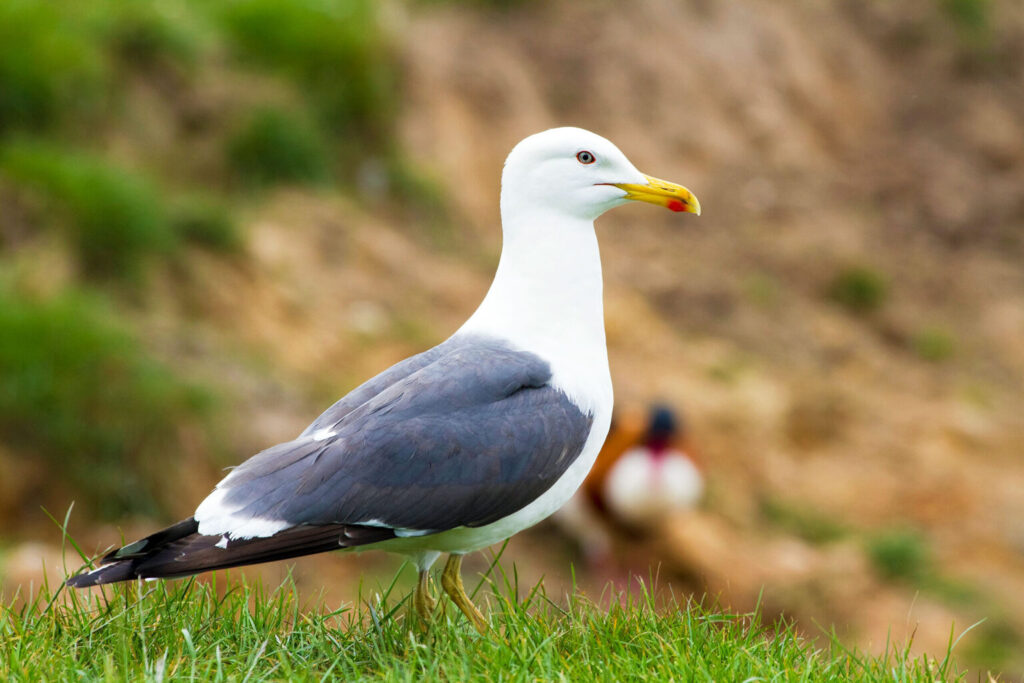In a groundbreaking study conducted by researchers from the University of Alaska Fairbanks, a significant discovery has been made regarding the behavior and habitat preferences of short-billed gulls. Led by Falk Huettmann, the team found that these coastal birds are undergoing a notable shift, Gulls Shifting their Habitats to Urban environments, marking a substantial change in their behavior.
Also Check: Breakthrough in Nanotechnology: Scientists Created the Smallest and Tightest Knot Ever
This study distinguishes itself as the first to compile a comprehensive three-year dataset using a citizen science approach, incorporating a diverse sample of gulls and other birds in urban Alaska. This approach offers a fresh perspective on the surprising transition of short-billed gulls to urban landscapes.
Contrary to their usual coastal dwellings, the research reveals that these gulls are now occupying areas typically associated with scavenging ravens. This includes supermarket parking lots, fast-food restaurant surroundings, industrial gravel pads, and even garbage dumpsters. The findings underscore a significant alteration in the gulls’ behavior and habitat preferences.
To conduct the study, Huettmann and his team employed artificial intelligence modeling, utilizing environmental variables specific to locations to predict gull occurrences. This innovative method, mirroring a previous study on the great gray owl distribution, incorporated U.S. census data and urban municipality data. Factors such as distances to roads, restaurants, waterways, and waste transfer stations were considered.
Moriz Steiner, a graduate student in Huettmann’s lab, highlighted the importance of using socioeconomic datasets, stating, “It allows us to mirror the real-world environment and simulate a situation as true to nature as possible.” This approach provided insights into the reasons behind the gulls’ transition to urban landscapes, primarily driven by the availability of human food sources and industrial changes.
The study carries significant implications for understanding how human activities and urbanization impact wildlife behavior. Concerns arise about the health and longevity of these birds, as the food they find in urban areas, particularly from fast-food restaurants, can be detrimental due to high quantities of salt, fat, sugar, grease, and contaminants. Additionally, the presence of gulls in urban areas poses health risks, as they are known vectors of diseases like avian influenza and salmonella, which can be transferred to humans.
Huettmann’s research emphasizes the changing dynamics of wildlife due to human influence and underscores the need for improved wildlife conservation efforts. He concludes, “This kind of information is providing a more holistic picture of how human influence on the environment is changing what we otherwise know as natural. Using machine learning will help us, hopefully, to advocate for improved wildlife conservation.”
More about gulls and their habitats:
Gulls, often recognized as quintessential seabirds, showcase remarkable adaptability and resilience in a wide range of habitats. While they are commonly associated with coastal regions, their habitats extend far beyond shores to include inland areas, urban landscapes, and even Arctic regions.
Coastal regions remain primary habitats for gulls, where they expertly exploit rich marine resources, offering a dynamic landscape for foraging. Inland areas such as lakes, rivers, and wetlands also witness the adaptability of gulls, as they feed on freshwater fish, insects, and small rodents.
Surprisingly, urban environments serve as unconventional habitats for these resourceful birds, as they navigate cityscapes, scavenging for food in waste dumps and heavily populated areas. Their intelligence and opportunistic nature enable them to thrive in the urban jungle by exploiting human-generated waste.
Remarkably, some gull species have adapted to extreme conditions, such as the Arctic. These hardy birds breed and feed in frigid environments, showcasing endurance with thick plumage and the ability to store fat reserves.
In summary, gulls are versatile and adaptable creatures that have successfully colonized a diverse range of habitats. From bustling coastlines to serene inland waters, and from urban sprawls to the Arctic tundra, gulls continue to showcase their remarkable ability to thrive in various environments. This adaptability not only highlights their ecological importance but also reflects the incredible resilience and diversity of nature itself. The full study can be found in the journal Ecological Informatics.
The full study was published in the journal Ecological Informatics.




Pingback: Jim Harbaugh Named Head Coach of Los Angeles Chargers after Agreement - 𝐋𝐈𝐎𝐍𝐉𝐄𝐊 News